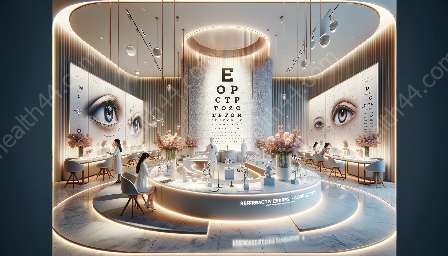Topography-guided LASIK is a revolutionary approach to vision correction that utilizes advanced mapping technology to address refractive errors and improve vision care outcomes. In this comprehensive guide, we'll explore the principles, procedure, benefits, and considerations associated with topography-guided LASIK.
The Fundamentals of Topography-Guided LASIK
Topography-guided LASIK is a specialized form of laser eye surgery designed to correct refractive errors such as myopia (nearsightedness), hyperopia (farsightedness), and astigmatism. What sets topography-guided LASIK apart from traditional LASIK procedures is its reliance on sophisticated corneal mapping technology to create a highly personalized treatment plan based on the unique topography of the patient's cornea. By leveraging this detailed mapping data, surgeons can tailor the laser ablation to address not only the prescription but also subtle irregularities in the cornea surface, leading to enhanced visual outcomes.
The Procedure: What to Expect
Before undergoing topography-guided LASIK, patients will undergo a thorough evaluation to assess their candidature for the procedure. This may include detailed corneal topography, wavefront analysis, and comprehensive eye examinations. Once deemed suitable candidates, patients will undergo the surgery, which typically involves creating a thin flap in the cornea, followed by the application of the laser to reshape the corneal tissue based on the personalized treatment plan derived from the topography-guided mapping.
The entire procedure is quick, typically lasting around 15 minutes for both eyes. Most patients experience minimal discomfort and rapid visual recovery following topography-guided LASIK, with many reporting significant improvement in their vision within a day or two after the surgery.
Advantages and Benefits
Topography-guided LASIK offers several advantages over traditional LASIK procedures. By customizing the treatment based on the precise corneal topography, this advanced approach can potentially lead to improved visual outcomes, such as sharper and more refined vision. Additionally, the tailored nature of topography-guided LASIK may contribute to reduced risk of adverse visual phenomena, such as glare, halos, and reduced contrast sensitivity, which are occasionally associated with conventional LASIK.
Moreover, topography-guided LASIK may be particularly beneficial for individuals with irregular corneal surfaces or those who have previously undergone refractive surgeries and experienced less-than-desired results. This advanced procedure has been shown to address visual irregularities and higher-order aberrations, potentially delivering superior visual quality and patient satisfaction.
Considerations and Risks
As with any surgical procedure, it's essential for individuals considering topography-guided LASIK to be aware of potential risks and consider relevant factors. While the vast majority of patients achieve significant improvements in visual acuity and satisfaction, there are potential risks to be mindful of, such as undercorrection, overcorrection, dry eye symptoms, and the potential need for enhancement procedures to achieve the desired outcome. Attending thorough consultations with experienced refractive surgeons and understanding expectations, limitations, and potential risks are crucial for informed decision-making.
The Future of Vision Care and Refractive Surgery
Topography-guided LASIK represents a significant evolution in the field of refractive surgery and vision care. As technology continues to advance, further refinements in mapping, treatment planning, and surgical techniques are anticipated, optimizing the accuracy and predictability of vision correction. Continued research and innovation in the realm of topography-guided procedures may expand the scope of candidates who can benefit from this advanced approach while enhancing the overall safety and efficacy of refractive surgeries.
Conclusion
With its precision, individualization, and potential for enhanced visual outcomes, topography-guided LASIK stands as a cutting-edge solution for addressing refractive errors and reshaping the landscape of vision care. By harnessing the power of advanced corneal mapping and personalized treatment planning, topography-guided LASIK offers the promise of sharper, clearer vision and improved quality of life for countless individuals seeking lasting freedom from dependence on corrective eyewear.


